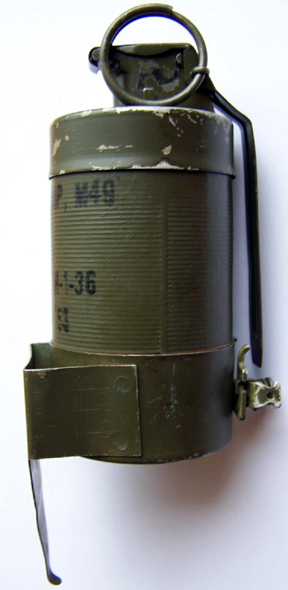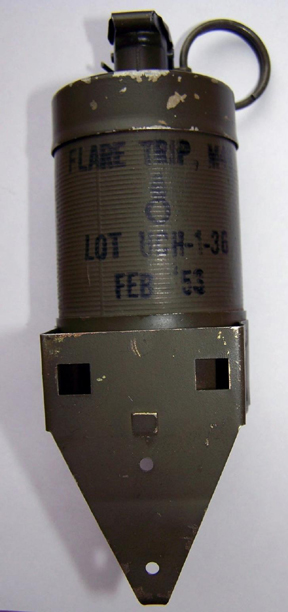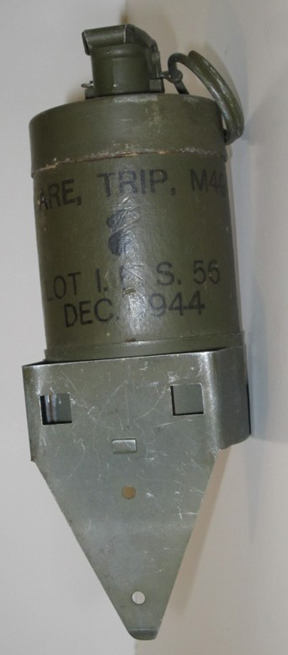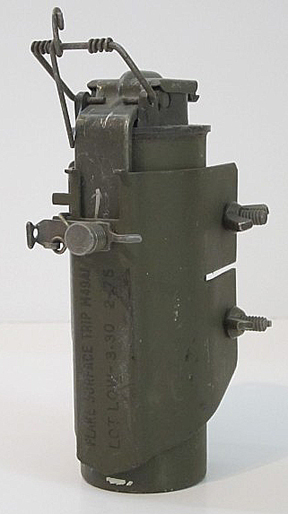|
Flare, Surface, Trip, M49
The flare is intended to give early
warning of enemy troops and for illuminating said troops.
It is normally dependent upon the actions of the enemy, but could
be command fired if necessary.
This flare was adopted in about 1944.
The body of the flare is a laminated
paper cylinder closed at both ends by metal caps.
The upper cap has a threaded central hole to fit the M12 fuze
mechanism. The body is
filled with an 11 ounce illumination charge.
There is no delay element in the fuze.
The bracket consists of a triangular
anchor clip with one hole at its lowest end for insertion of a nail and
two square holes to engage with tabs on the mounting plate which also
has two nail holes. The
trigger mechanism is spring loaded.
One end has the spring attached and has a hole for attaching the
trip wire. The opposite end
has a small tab that holds the safety lever in place when the trigger is
cocked. The spring winds
around the trigger pivot.
The bracket is painted olive green.
The flare is painted olive green with markings in black
Each flare is packed with three nails
and 45 feet of trip wire.
The flare burns with a yellowish light
and can illuminate an area of 300 yards radius, depending on the
terrain. The flare will
burn for about 55 seconds.
When the flare is laid, it should be
laid with the flare itself on the enemy side so that the flare will
illuminate the enemy and be shielded from direct sight from friendly
troops. The trip wire runs
to the right of the trigger mechanism.
A pull of two or more pounds on the wire will cause the flare to
operate. If the enemy finds
the wire and severs it, the flare will also operate.
|






